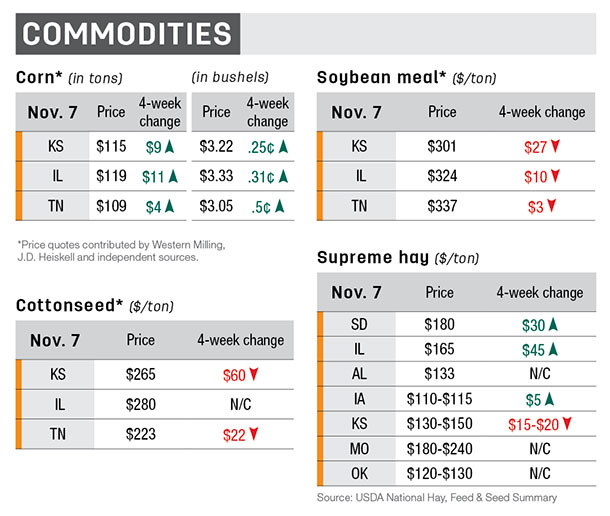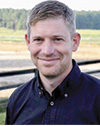The Veterinary Feed Directive rule is all but in effect. Have a VCPR set up with a clinician to avoid any hiccups if the worst arises.
Regarding the herd, if winter grazing is available, high-mag mineral should be out. Rotate through paddocks to minimize grazing closer than 4 inches. If stockpiled forages and hay quality are already declining, get the commodities and feed out earlier rather than later.
A couple of pounds of supplemental energy early on is more effective than attempting to play catch-up with body condition score during the cold, damp parts of late winter.
Particularly for those in drought areas, low-quality feedstuffs will need additional vitamin A in salt or supplemental feed. Vitamin A deficiency will bring about aborted calves, stillborns, abnormal bone development and increased risk of infectious disease.
Supplement now to prevent deficiencies in calves this spring. Work with your veterinarian or nutritionist to make sure all the necessary vitamins and minerals are adequately provided.
Spring calving
Heifers will need a clean, well-drained pasture, if possible. They should be receiving the better end of the forage supply now through breeding. Nutritional requirements increase 10 to 15 percent during the last 30 days of gestation and will continue to increase through peak lactation and breeding time.
 Remember that 2-year-olds are only at 85 percent of mature weight at first calving. With the forage analysis in hand, work up a ration for heifers in peak lactation in advance. Check them every six hours, when most calving losses occur in heifers. Watch heifers without disrupting the process.
Remember that 2-year-olds are only at 85 percent of mature weight at first calving. With the forage analysis in hand, work up a ration for heifers in peak lactation in advance. Check them every six hours, when most calving losses occur in heifers. Watch heifers without disrupting the process.
Heifers need roughly an hour after the appearance of the water bag. Look for both front feet. If one front or rear foot is presented, at least some assistance will be likely.
Fall calving
Heifer breeding is high on the list for herd management. The herd must be near a body condition score of 5 to rebreed on time. If they are thin, a positive plane of nutrition will improve conception rates. This is where the 2017 calf crop begins. ![]()

-
Jason Duggin
- Beef Extension Specialist
- University of Georgia
- Email Jason Duggin








